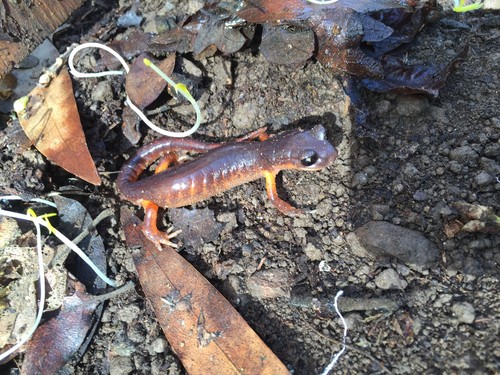Monterey ensatina
A species of Ensatina Scientific name : Ensatina eschscholtzii Genus : Ensatina
Monterey ensatina, A species of Ensatina
Scientific name: Ensatina eschscholtzii
Genus: Ensatina
Content
Description General Info
Description
Ensatina eschscholtzii (commonly known by its genus name, Ensatina) is a complex of plethodontid (lungless) salamanders found in coniferous forests, oak woodland and chaparral from British Columbia, through Washington, Oregon, across California (where all seven subspecies variations are located), all the way down to Baja California in Mexico. The genus Ensatina originated approximately 21.5 million years ago.
General Info
Lifespan
10-15 years
Diet
Monterey ensatina primarily subsists on a diet rich in small invertebrates, including insects and arachnids. Adaptable foragers, these animals show a preference for termites, spiders, and beetles, relying largely on nocturnal hunting tactics to secure their prey.
Appearance
Monterey ensatina is a medium-sized salamander with a slender, elongated body and smooth, moist skin. It exhibits varying shades of brown to black, often displaying a unique mottling pattern. Its tail is round and substantial, serving a crucial role in the animal's defense mechanisms. Minor differences in color patterns and body proportions might exist between subspecies.
Behavior
Monterey ensatina is largely a nocturnal species, mainly active during twilight hours. This solitary salamander practices unusual courtship behavior, with the male often leading a female to a suitable oviposition site. It does not defend its territory aggressively. Equipped with excellent camouflage, it adapts to its forested habitat efficiently, blending seamlessly into leaf litter or tree bark to avoid predators.
Population
Stable
Scientific Classification
Phylum
Chordates Class
Amphibians Order
Salamanders Family
Lungless salamanders Genus
Ensatina Species
Monterey ensatina 